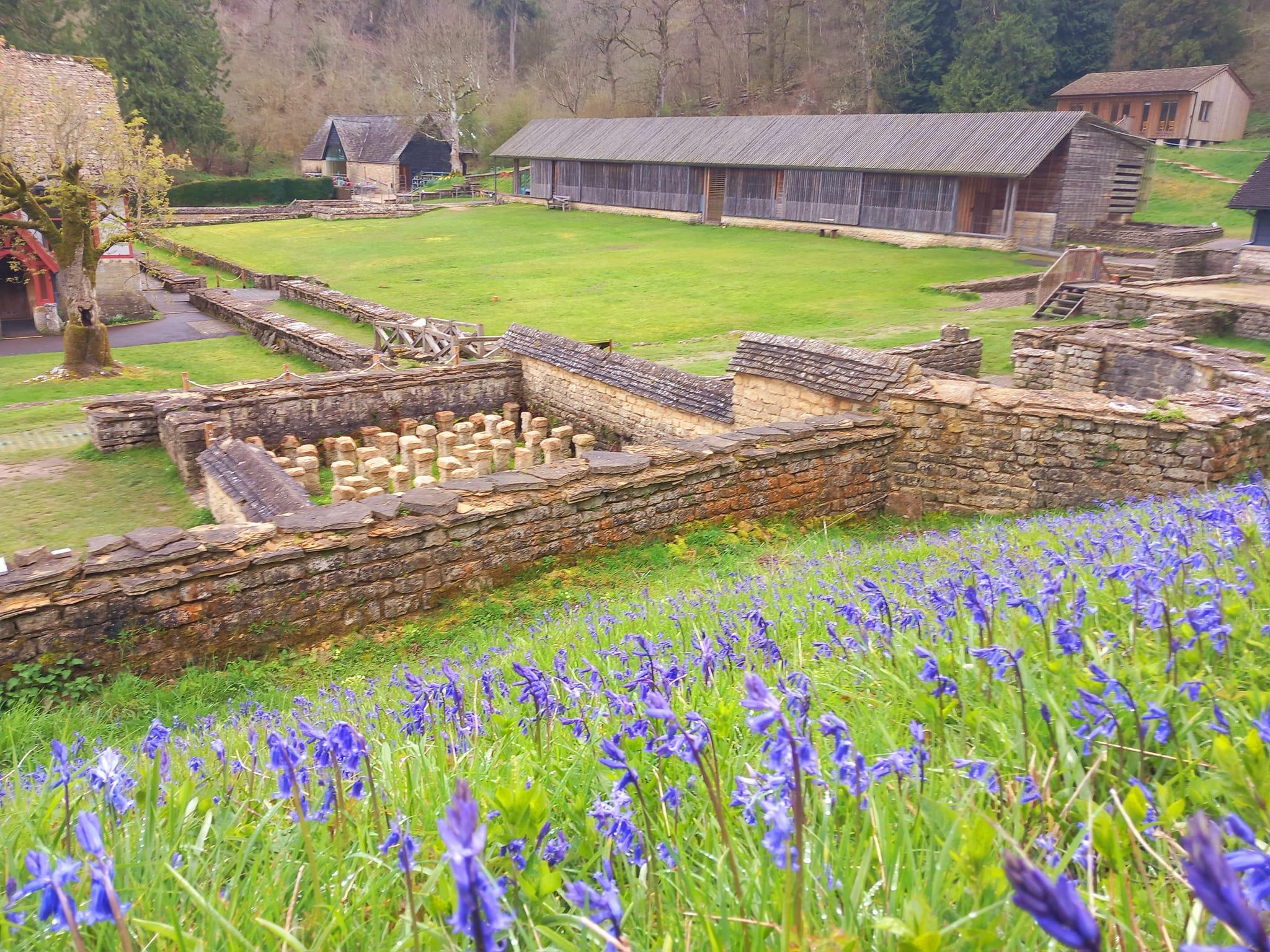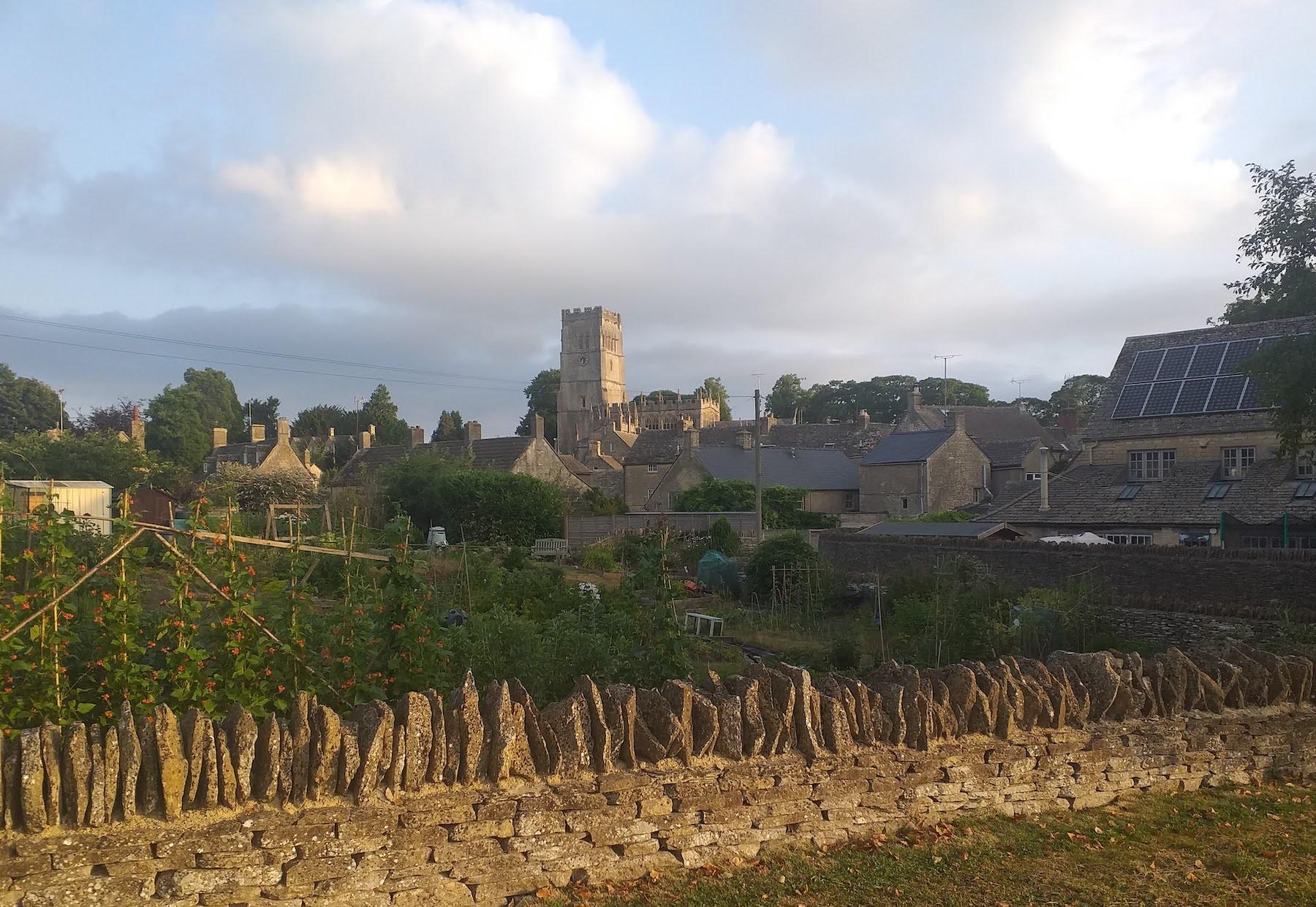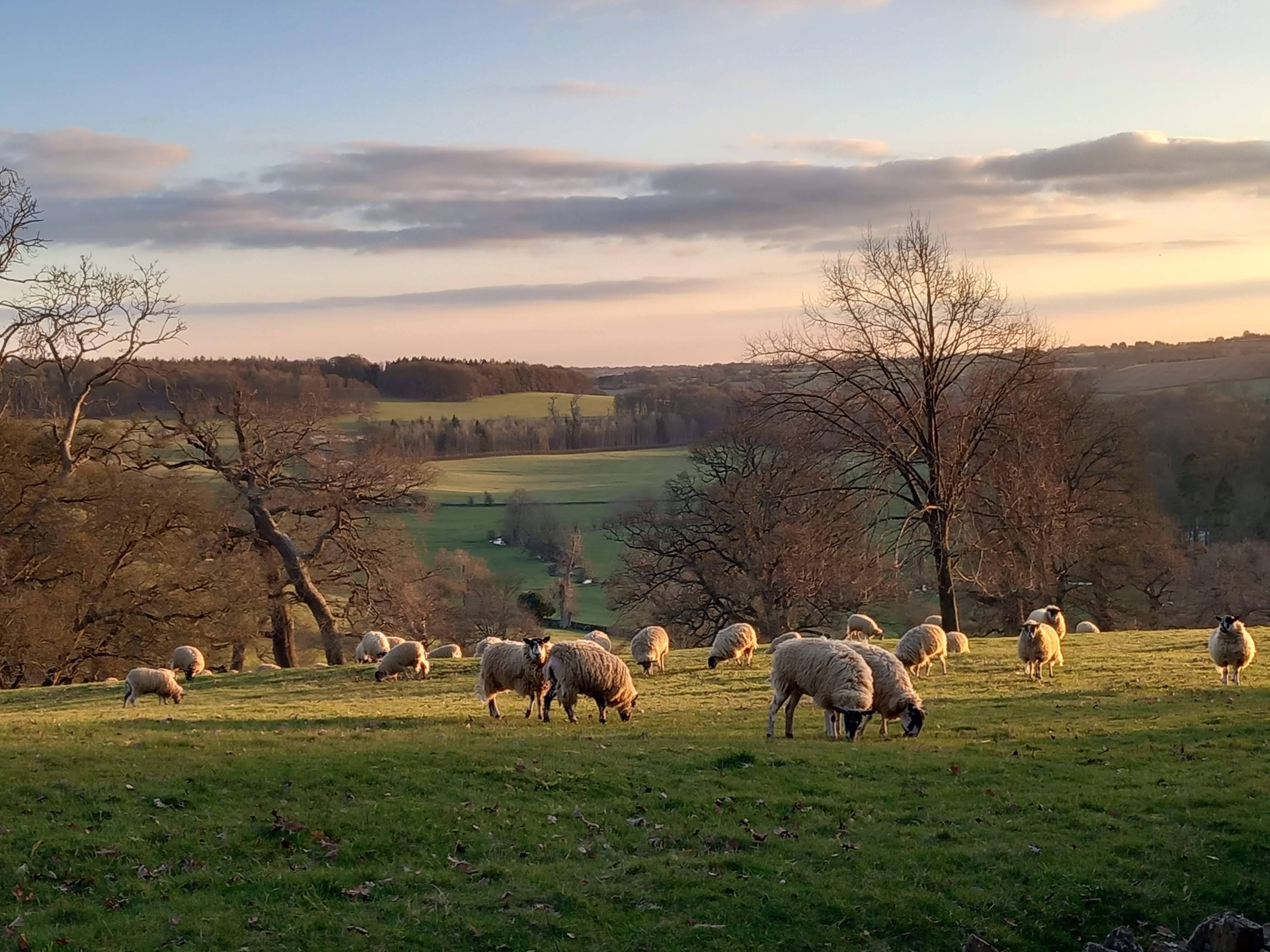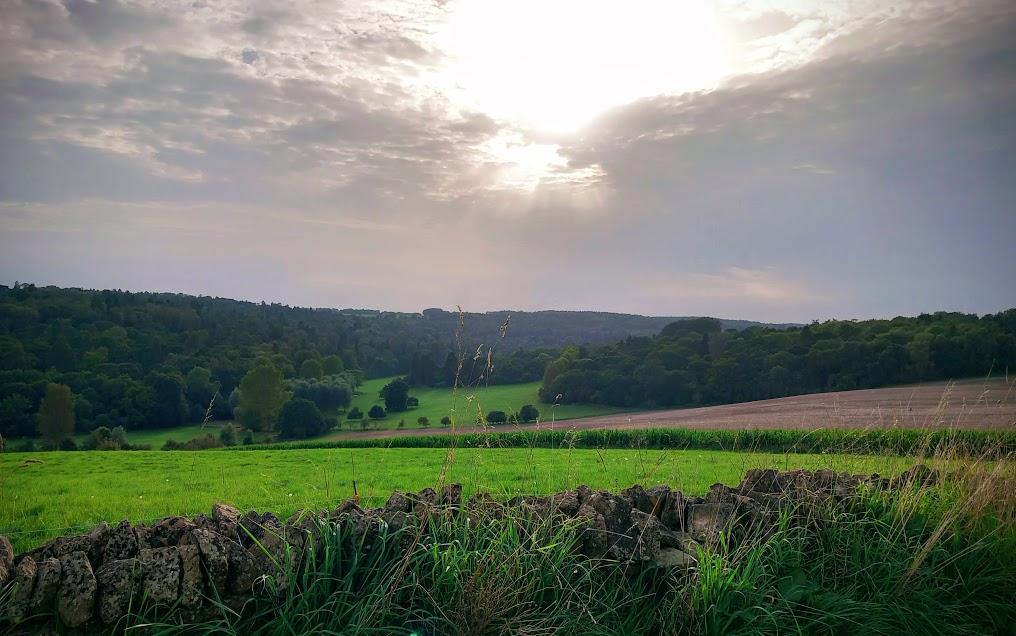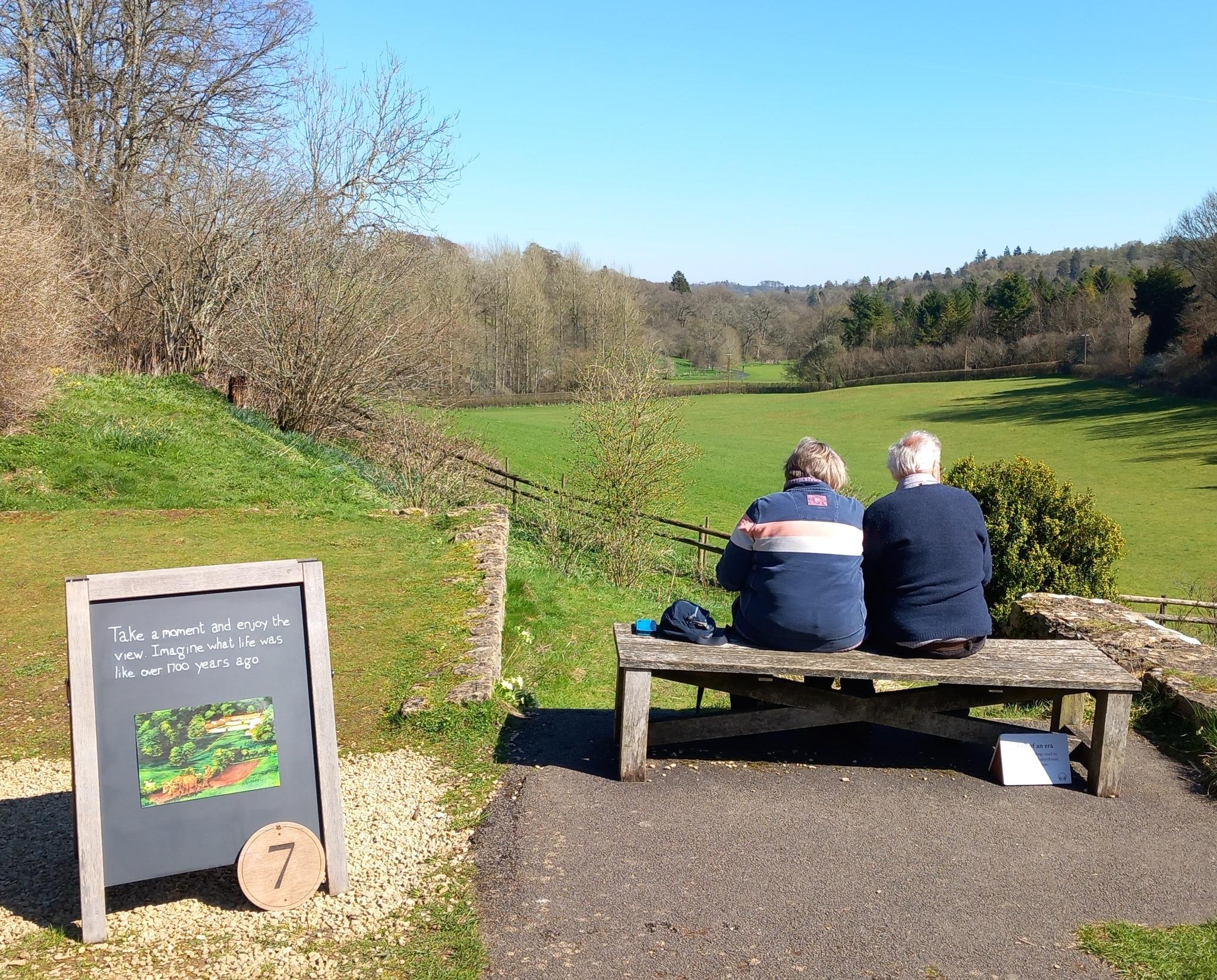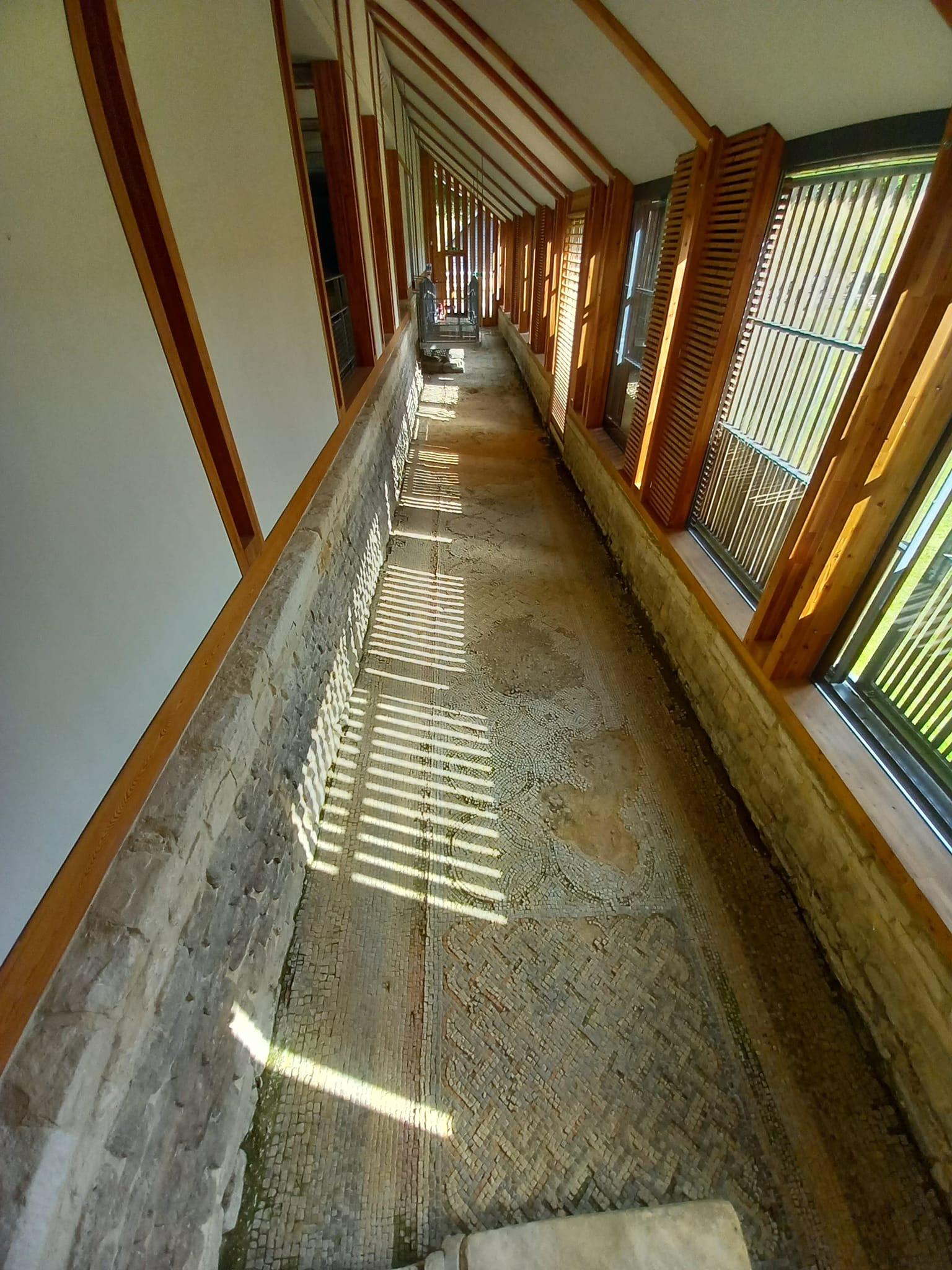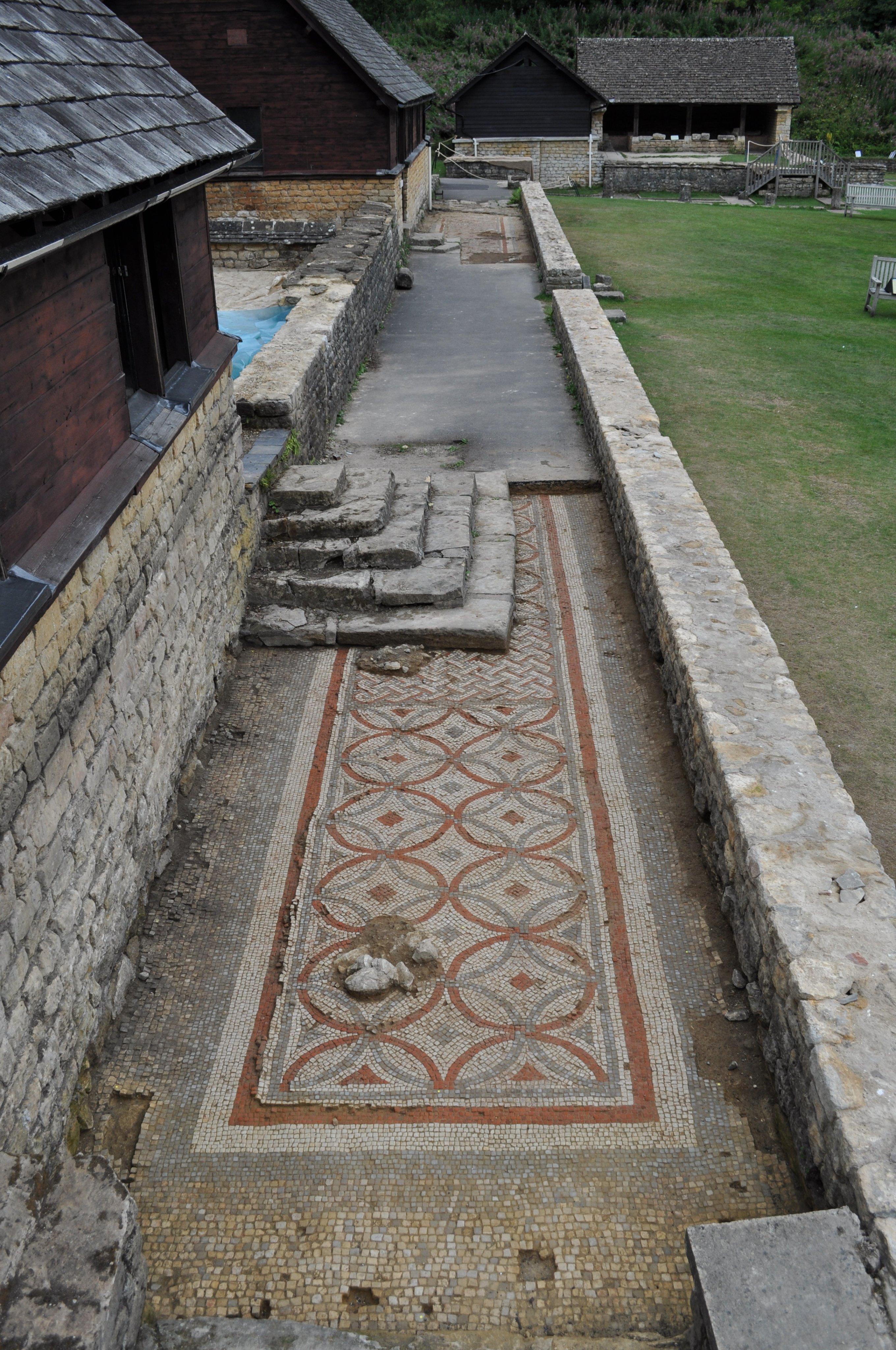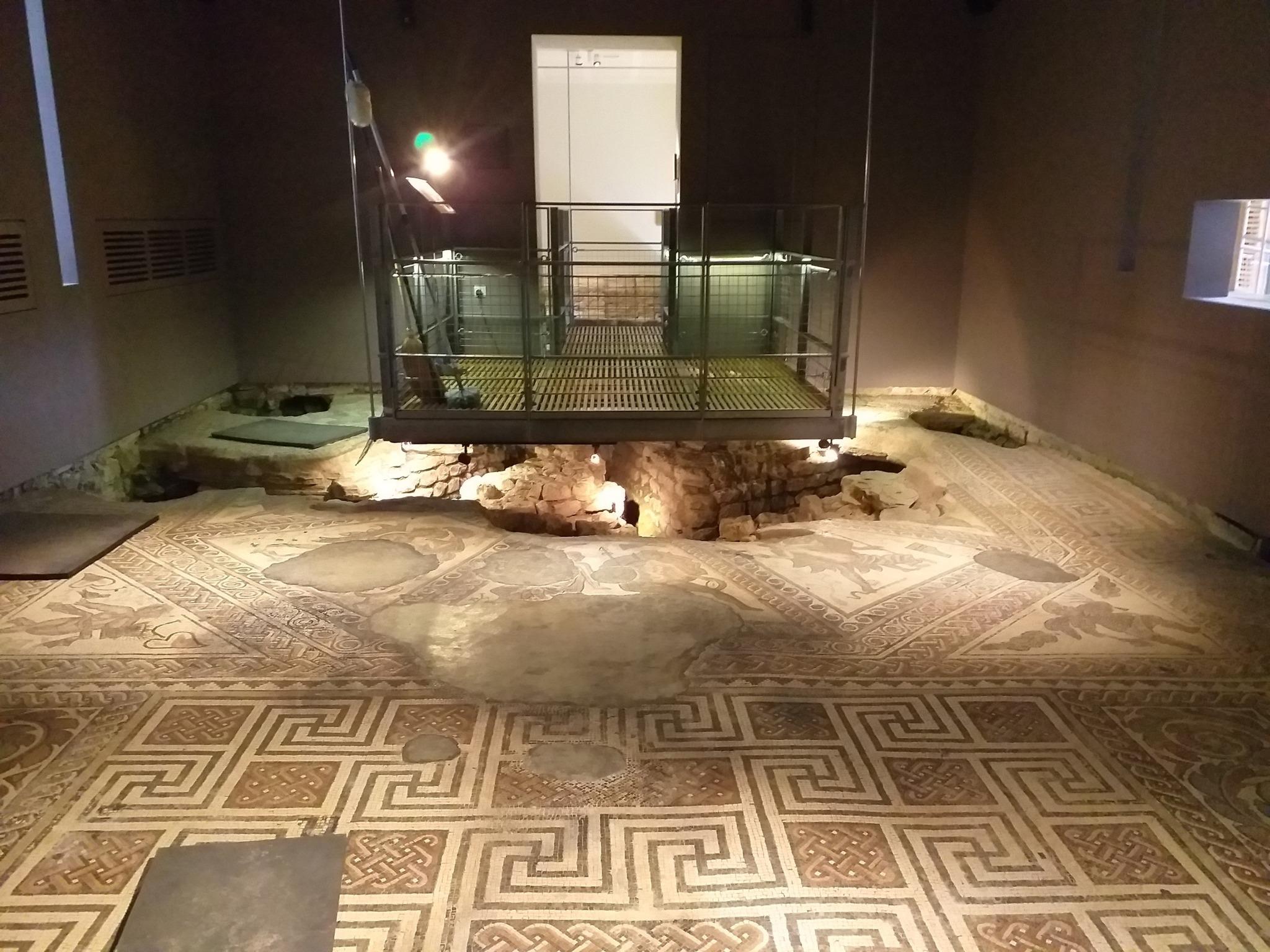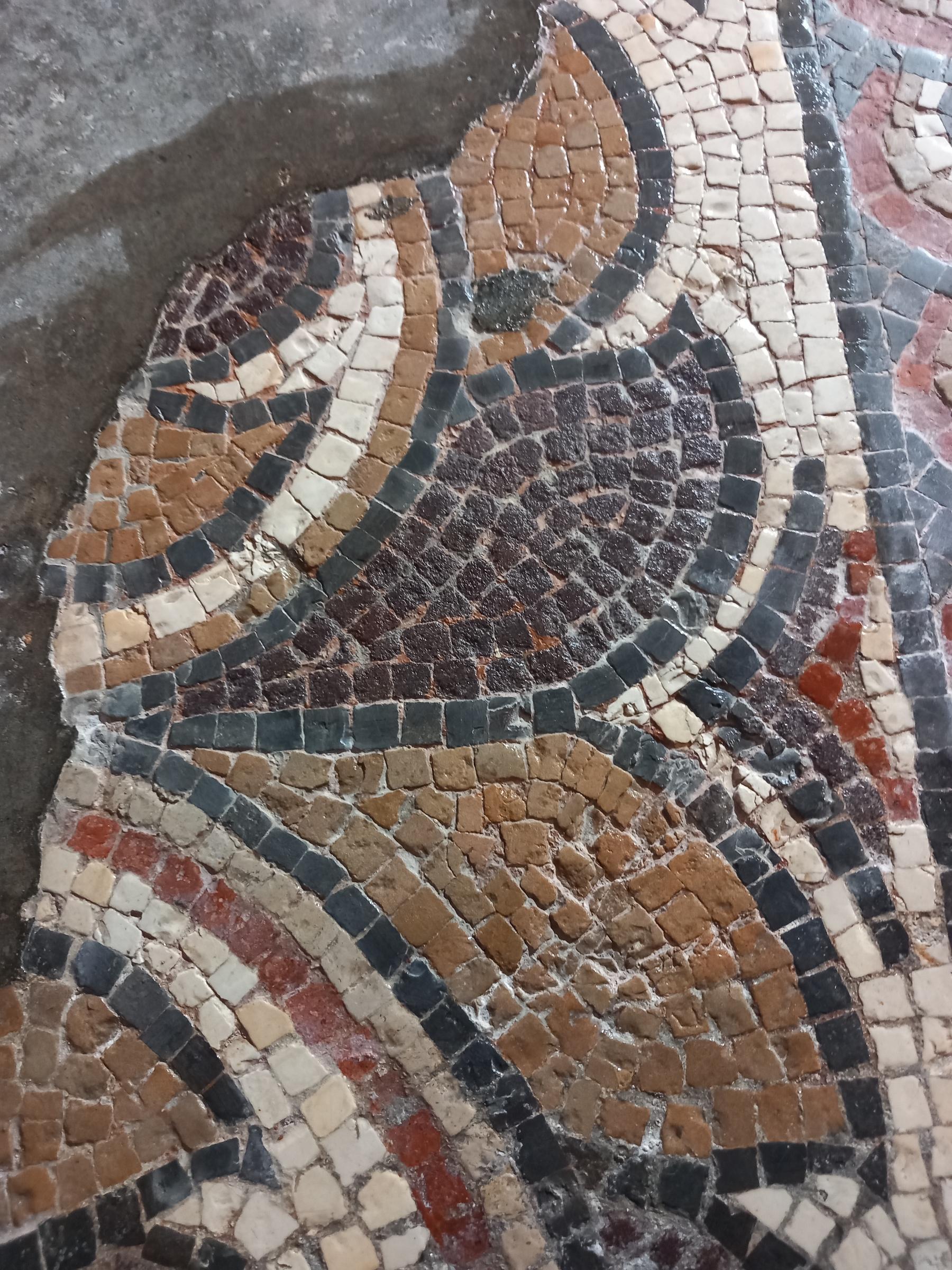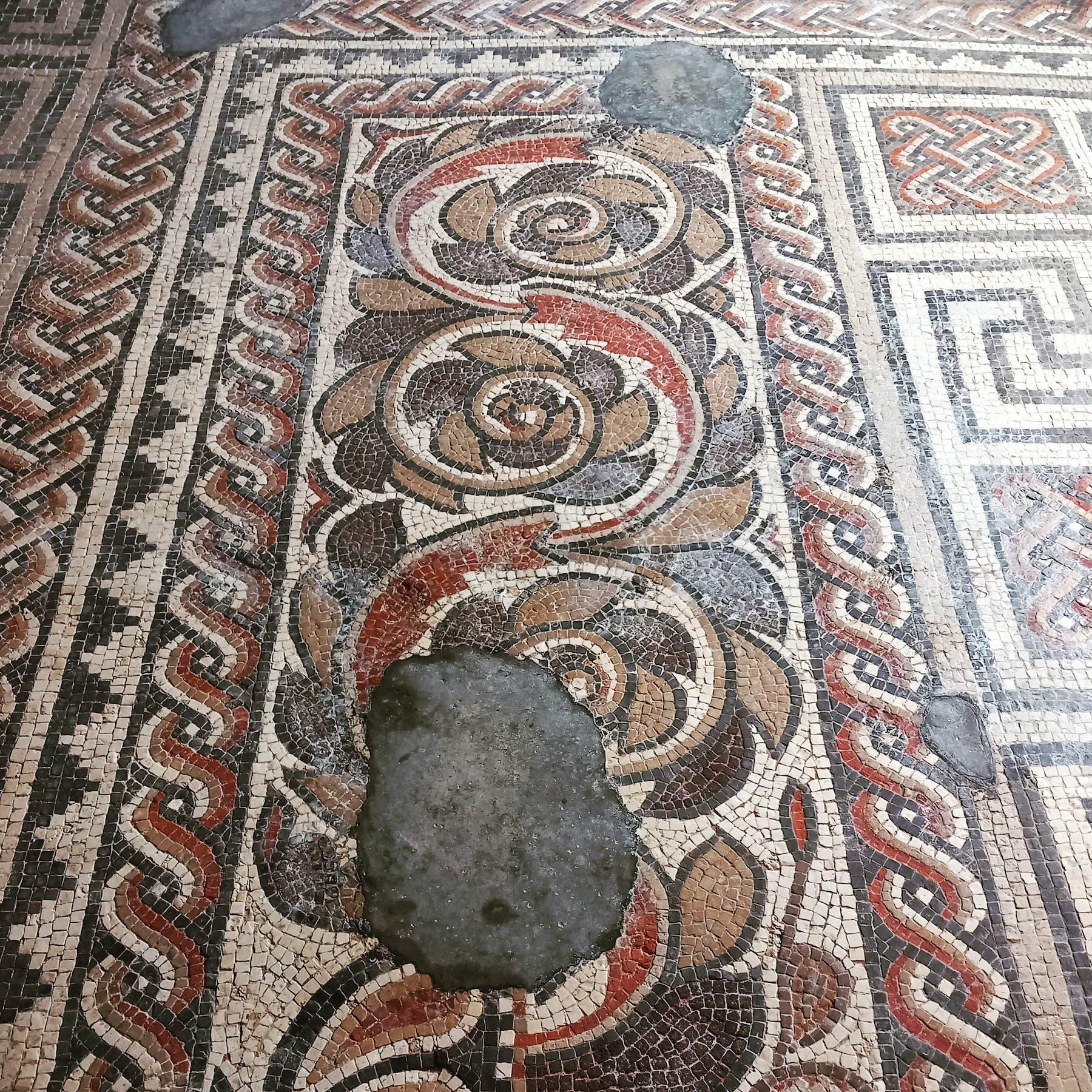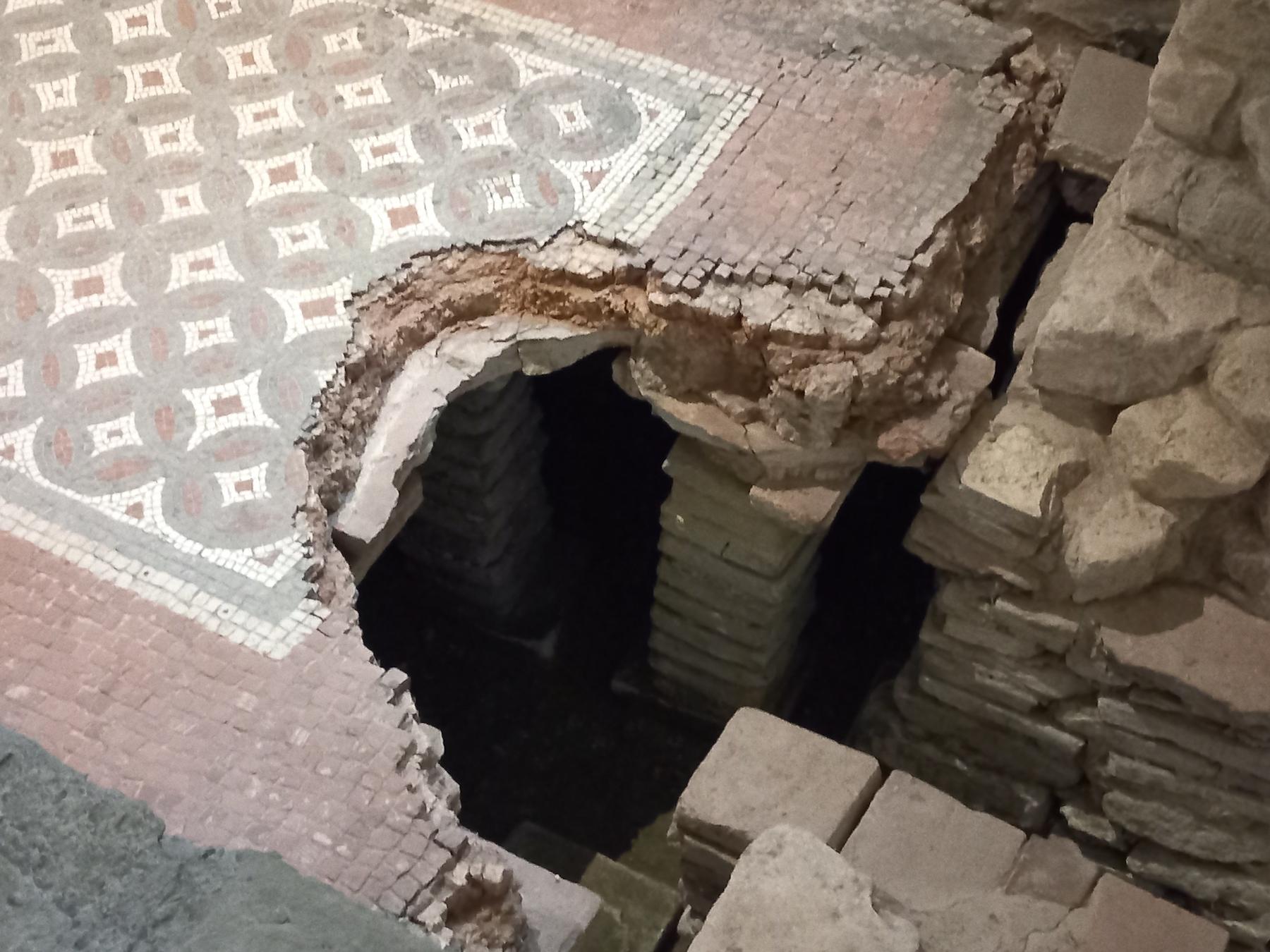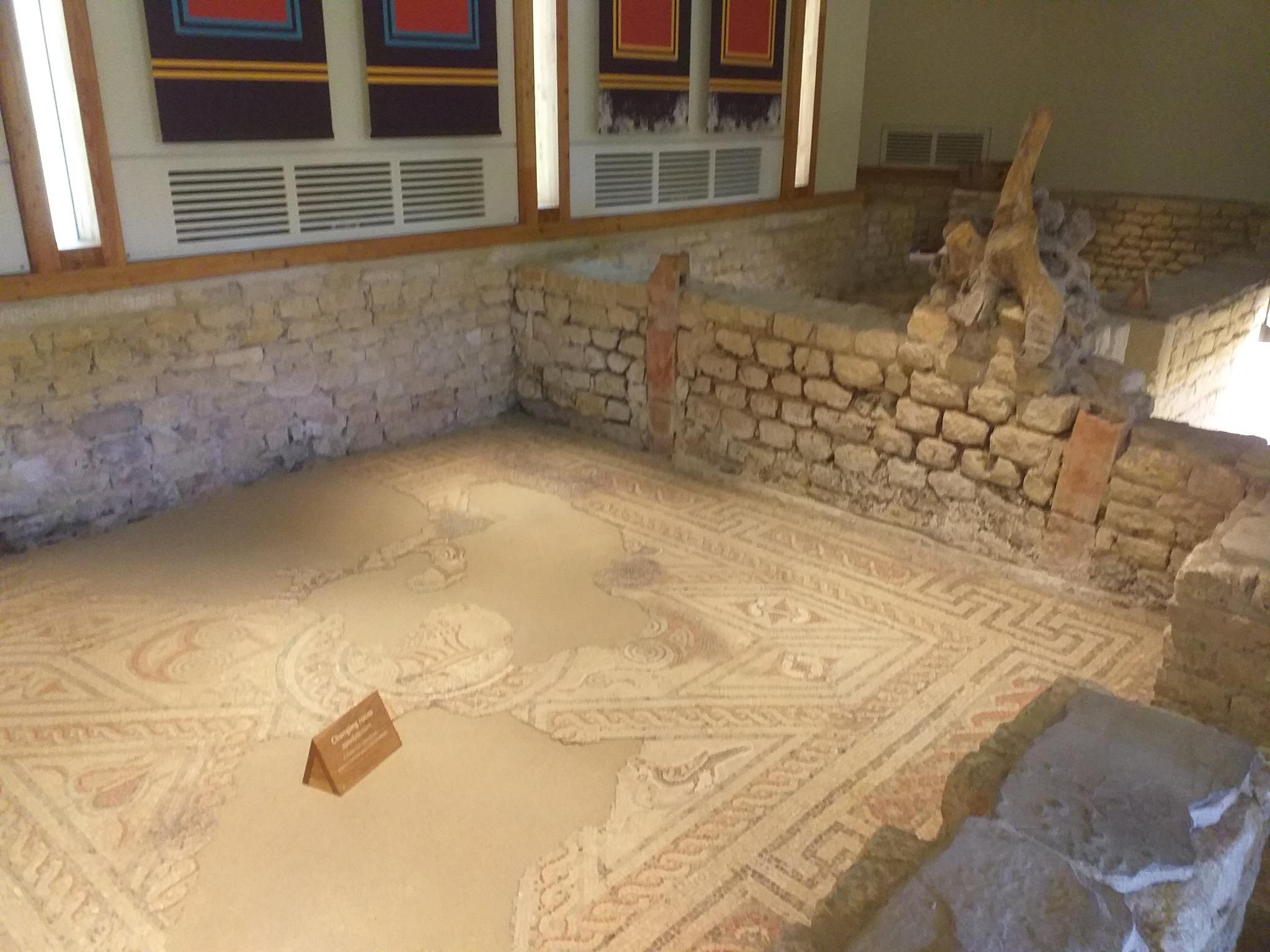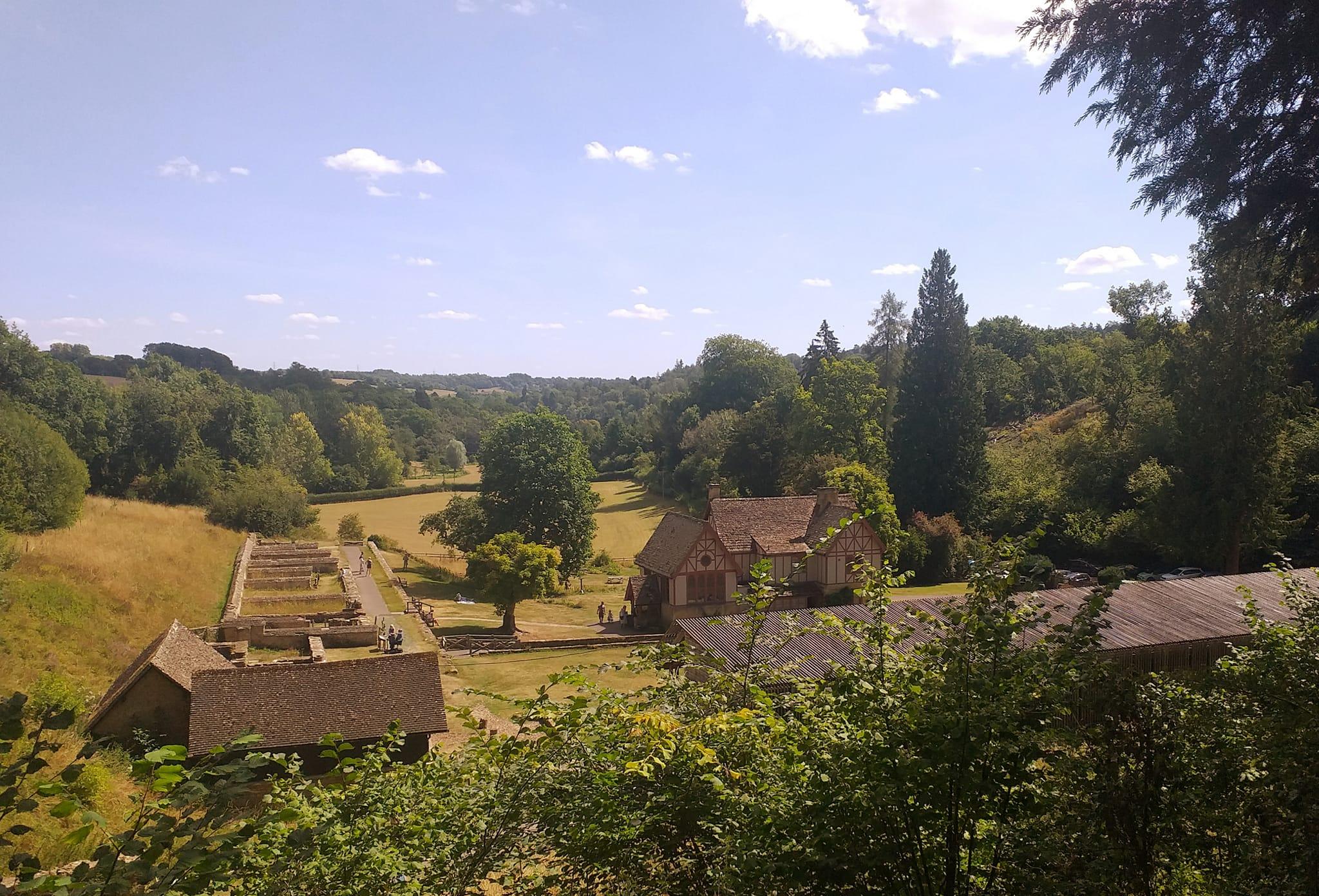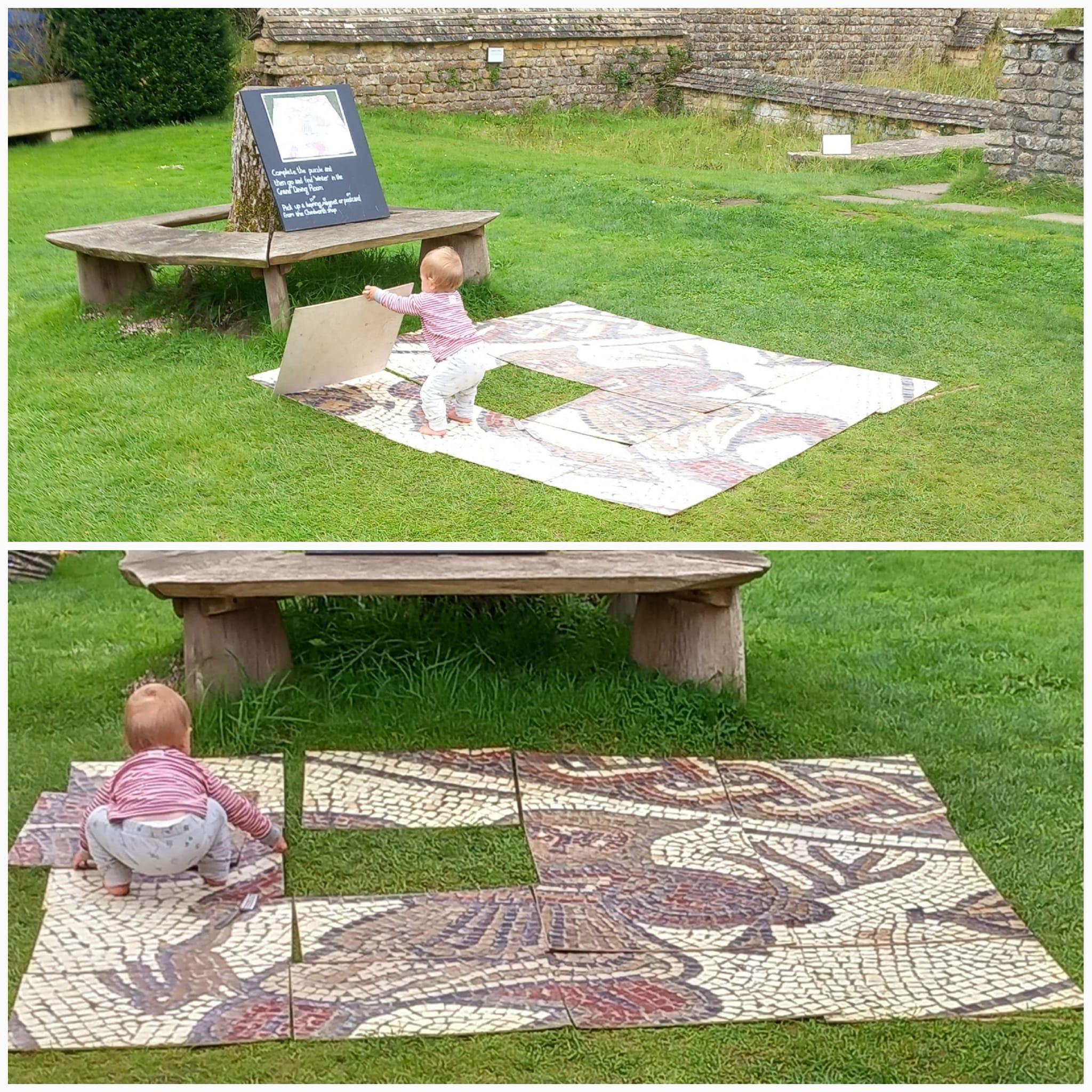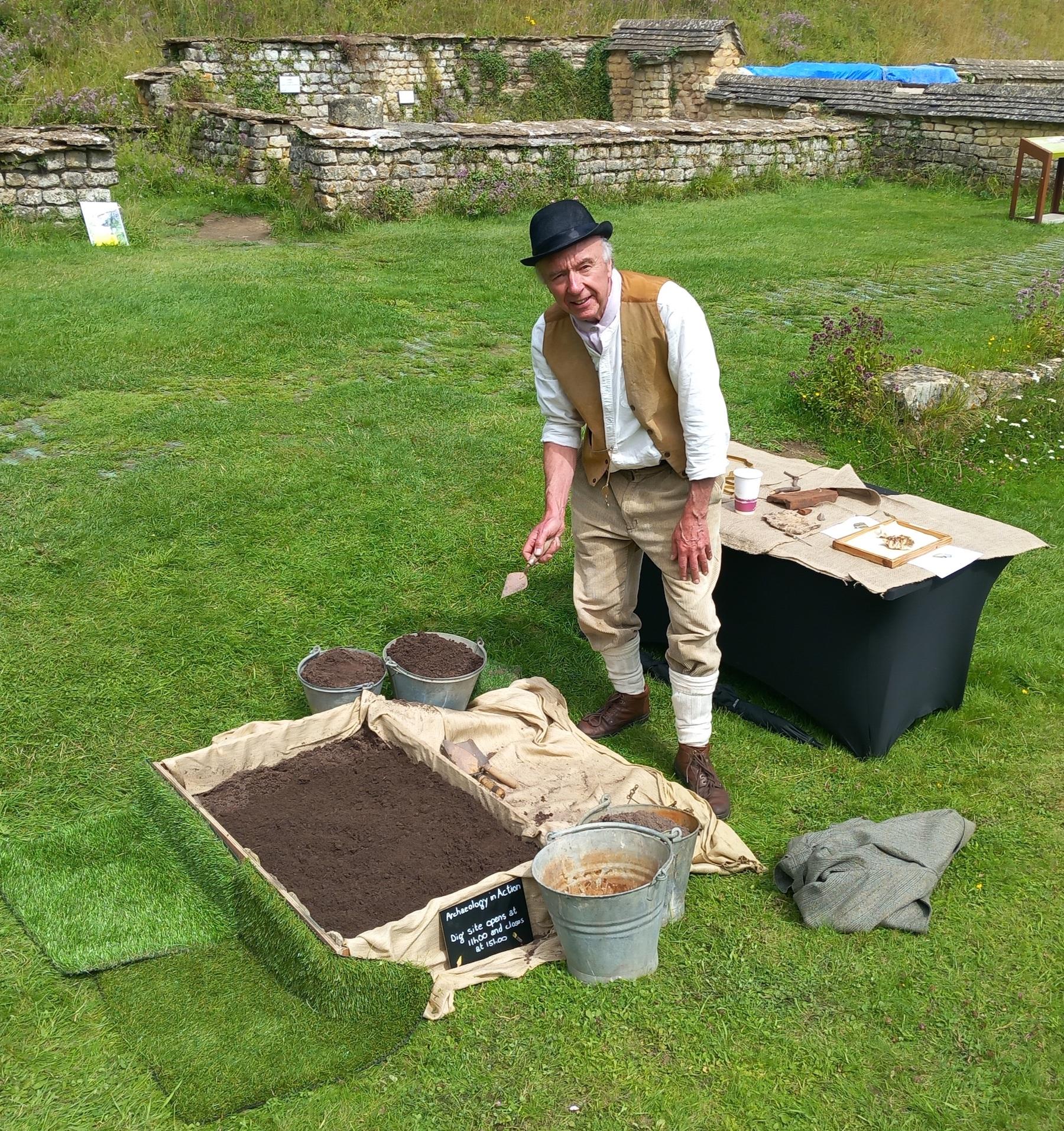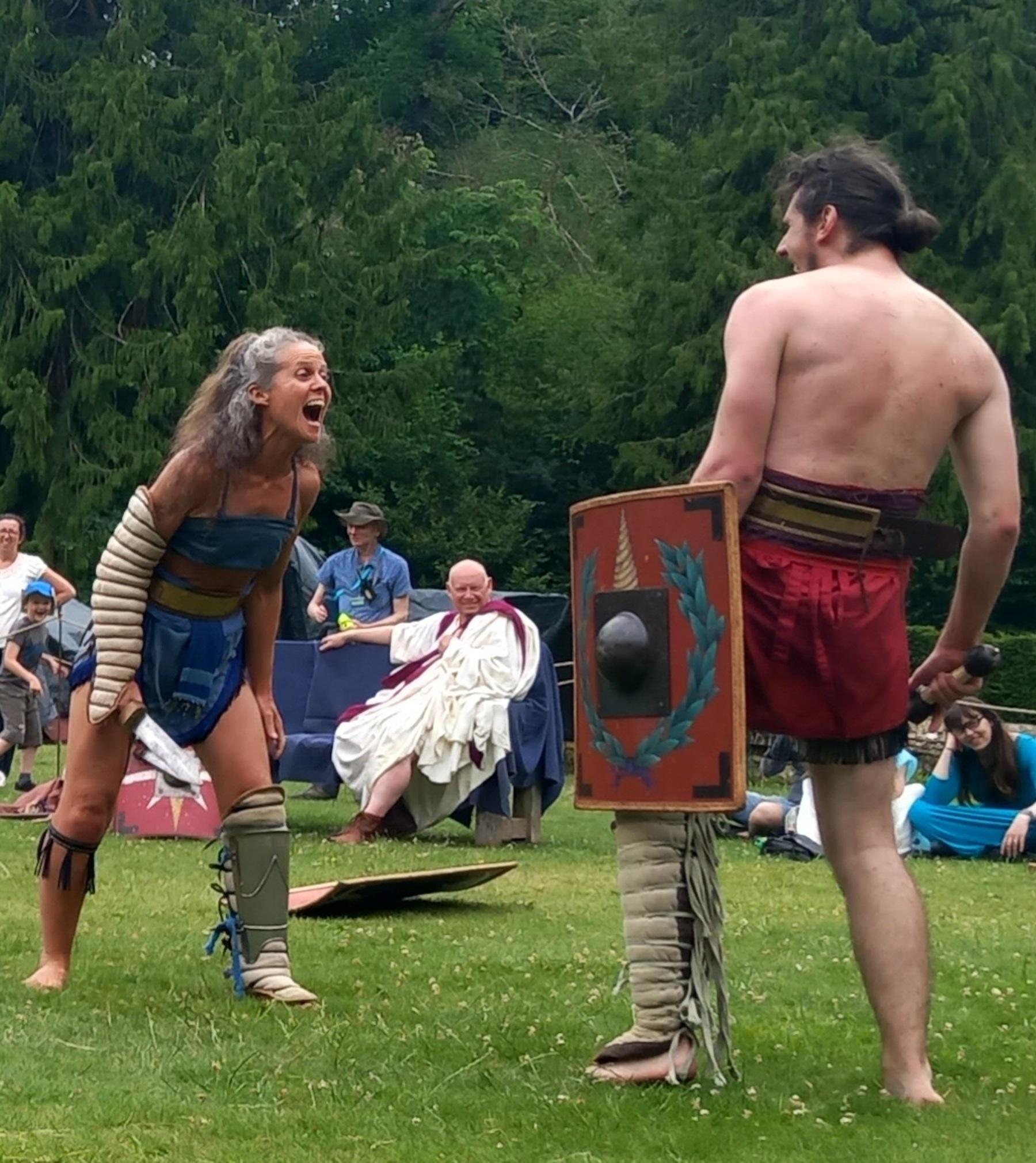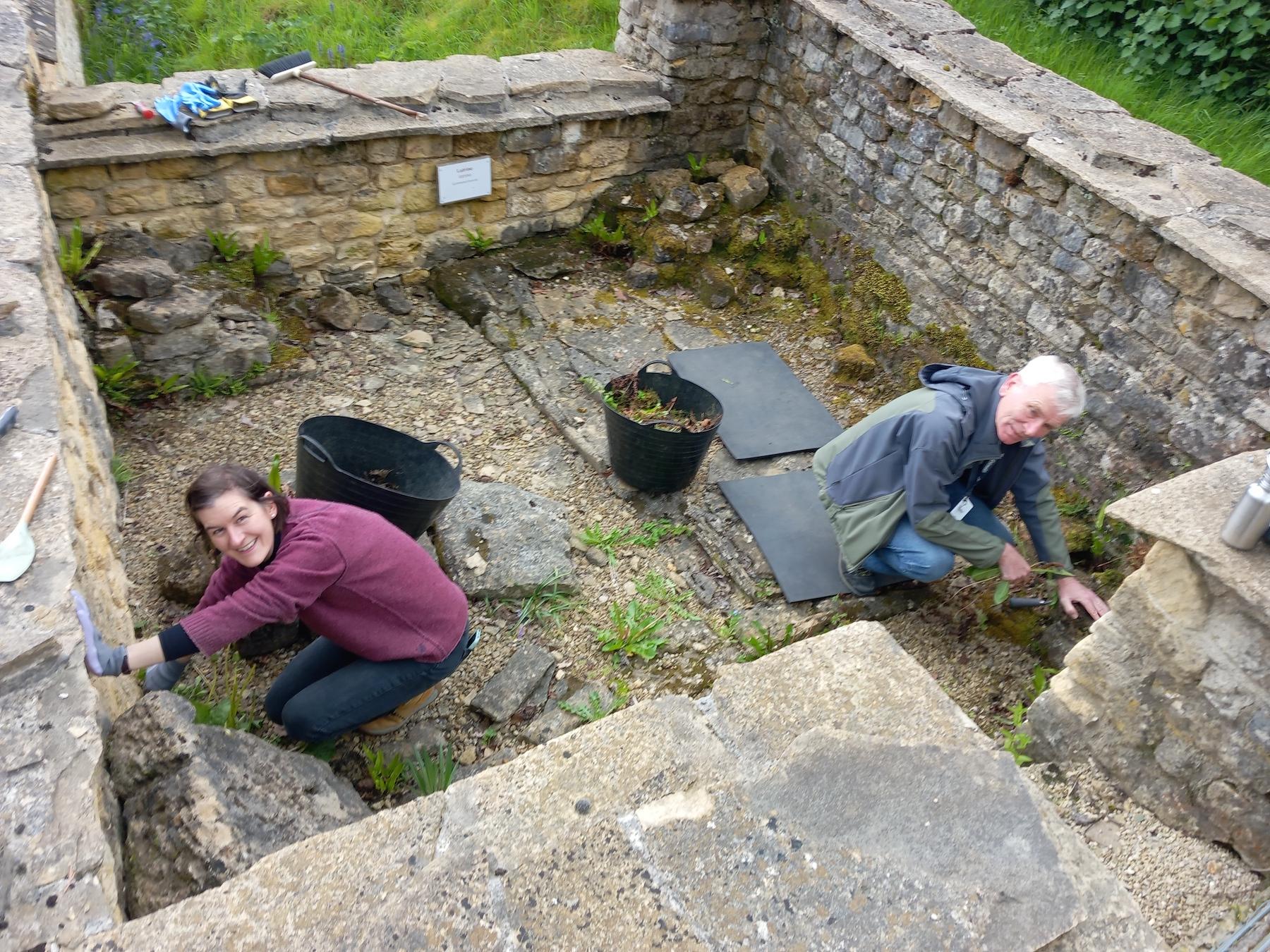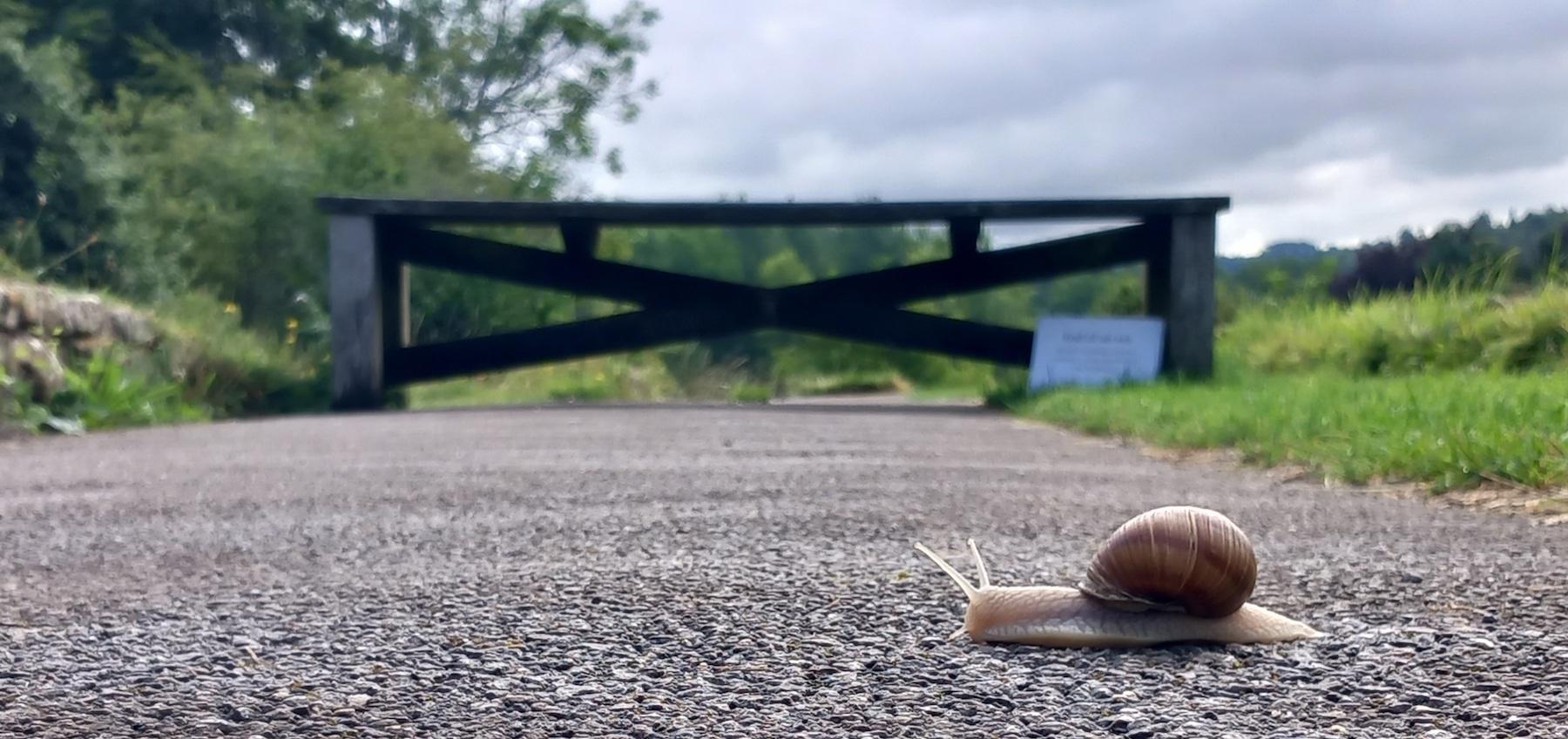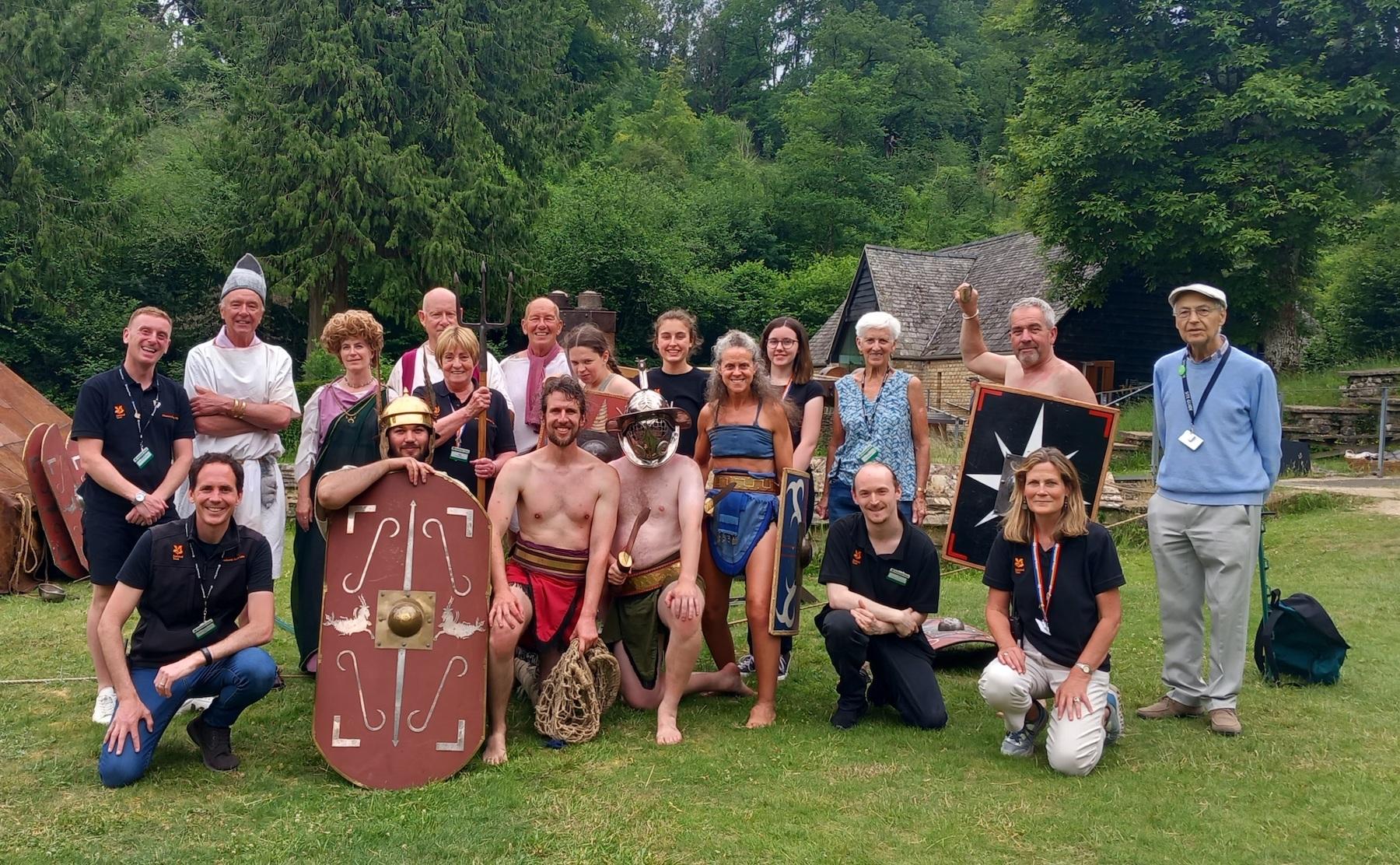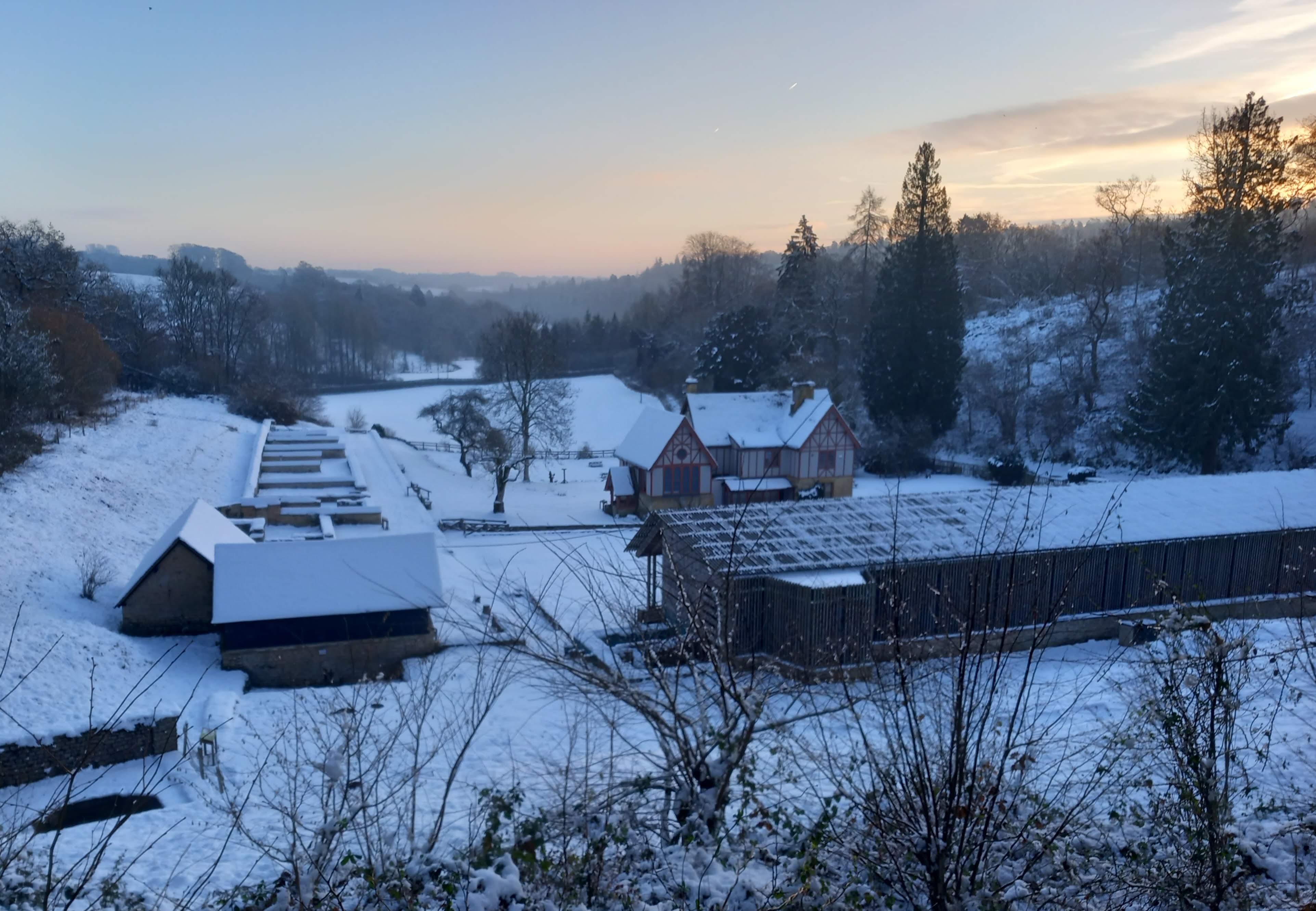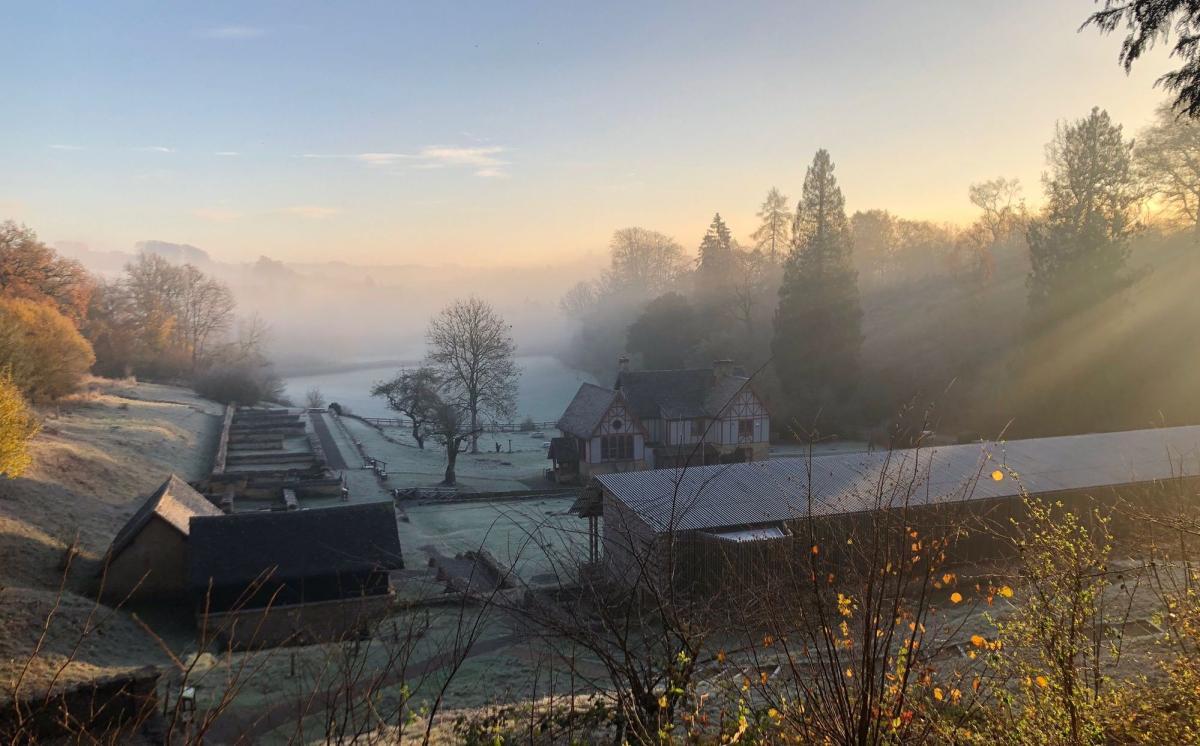
Disclaimer: Any views expressed by individuals and organisations are their own and do not in any way represent the views of The Heritage Portal. If you find any mistakes or historical inaccuracies, please contact the editor.
It has been just over a year since I made the move from South Africa to the UK to work for the National Trust. What a journey it has been. Several people have asked me to reflect on the experience so far, so here we go...
The National Trust's 'oldest stately home'
The Trust is known for its grand homes, superb gardens and special collections. There are over 500 properties in the NT portfolio and I have found my way to a unique site, a 1700 year old Roman Villa and what some people fondly call the Trust's 'oldest stately home'. In its heyday in the 4th century AD, it was one of the grandest villas in Roman Britain with underfloor heating, running water for the latrine, spectacular mosaics and two bath houses. We still don't know how the owners made their money (there are several theories) but we do know from the scale of the structure and the spectrum of artefacts found here that they would have been part of the elite. I love the place and have become very attached in a short space of time.
Bluebells during springtime at the Villa. The pillars in the room on the left are the remains of a hypocaust (underfloor heating system).
Every morning I make my way from Northleach, a beautiful Cotswold Village with a population smaller than Ponte, to the Villa about ten minutes away. The scenery is magnificent. I love watching the changing seasons, the sheep in the fields and the views over the winding Coln River.
View towards the Northleach Church
The only traffic on my commute
View over the Coln Valley
A few times a week I am lucky enough to open the site. I am there alone surrounded by ancient walls and some of the finest mosaics in the country. I have several favourite places where I pause and remind myself how lucky I am to be here. One is at the viewpoint at the far end of what is called the North Range or North Wing of the Villa. The scenery is spectacular and you immediately understand why someone would want to build a villa on this site. I stand there thinking of the people who lived, worked and visited here all those years ago.
Visitors enjoying the view
Another spot is inside the cover building that protects our finest mosaics. As I enter the building, I gaze out over our Long Corridor Mosaic which, at over 30m, is one of the longest in situ mosaics in Britain. It is a sight to behold and one of the reasons why people come from all over the world to visit Chedworth.
Sun pouring onto the Long Corridor Mosaic
The mosaic before the West Range cover building was erected (Chedworth Roman Villa)
I then move to the grand dining room which has one of the finest mosaics in the country. Some of the tesserae (mosaic pieces) are half the size of a pinky nail and the colours are magnificent. A few weeks ago, I was one of a few very lucky people to be allowed onto the floor to play my part in preserving it. To be that close to a 1700 year old mosaic of exceptional quality was an experience I will never forget. One of our site guides told me that there are over a quarter of a million tesserae in this floor alone!
The Grand Dining Room Mosaic
Cleaning the mosaic
Some of the intricate patterns and details
The warm room mosaic in the Bath House is probably my favourite. It looks as though a big bite has been taken out of it and you can see a wonderful cross section of a mosaic floor with underfloor heating system below. If you look closely, you can see two layers of tesserae... evidence of a bit of redecorating over the years?
Cross section of a mosaic floor
Nearby is a tree stump (in a wall) left by the Victorians to show the level of the land when the Villa was rediscovered in 1864. How such a vast building was reclaimed by nature and buried beneath the soil just boggles my mind. It makes me wonder how many time capsules like this are waiting to be discovered.
The tree stump is to the right of this image
I also love heading up to the viewpoint above the site. From here you get an idea of the full extent of the Villa. This was one very grand mansion! Ignore the house in the middle... that's the lodge built by the Victorians (and my office). If you trace the walls on the left of the image below and then the cover building on the right, you will get an idea of how big this place was in its heyday.
The scale of the Villa seen from above
One of the best jobs in the world
I truly have one of the best jobs in the world working for an organisation with values that match my own. When people ask me what I do, I answer that I bring the history of this special place to life. This involves everything from planning and designing the way we tell the story of the Villa to running a programme of events to keep the site buzzing throughout the year. My team has so much fun creating new activities to engage different audiences and working with wonderful characters to create memorable experiences.
A giant puzzle of the figure 'Winter' from the Grand Dining Room mosaic
An excavation experience bringing archaeolgy to life
Gladiator shows draw the crowds
A highlight of my role is that I get to support all the volunteers that commit time and energy to Chedworth. We are a tight community and I am lucky to have made some great friendships in a short space of time. It is no exaggeration to state that the immense task of running a complex organisation like the National Trust would not be possible without the generosity and expertise of our volunteers.
At Chedworth we have around 50 volunteers who take on varied roles around the site. Site guides share their knowledge of Roman Britain with visitors and add an extra layer to the experience. They are able to grow, learn and challenge themselves intellectually while interacting with people from all over the world. Conservation volunteers help to preserve the ruins of the Villa for future generations by tackling tasks such as cleaning the mosaics, removing weeds from the walls, inspecting the wall cappings and wrapping up the site for winter to protect it from the frost.
Removing weeds from the oldest toilet in the National Trust
The Ranger volunteers look after all things nature from mowing the lawns and maintaining the gardens to working with the Visitor Experience team to raise awareness of the unique species in the area. We also have event volunteers who help us to put on a show whether it be Roman-themed crafts, dressing up, family trails or historical demonstrations. With such a love for the site, most people are ready to muck in and turn their hand to whatever job is most pressing to keep Chedworth running smoothly. I go to bed each night amazed by how much people contribute and how much purpose being part of the community brings them.
A Roman Snail is one of the rare species at the Villa
I love this shot of a few staff members, volunteers and reenactors posing after Gladiator Weekend in June. An event of this scale is only possible with help from our volunteers. I am the official photographer on site so this is one of the few pictures with me in it (bottom left).
A final highlight of my job worth mentioning is that I get to run all the marketing and communications. I spread the word about all the cool things we are up to via multiple channels and keep everyone in the community in the loop with what is happening at the Villa. One thing I have become particularly attached to is the property newsletter, The Chedworth Chatter, which isn't surprising considering how much I love putting together The Heritage Portal newsletter every week. I love seeing how engaged people are and am grateful that so many want to contribute stories to 'The Chatter' each month.
Challenges
Even the best job in the world isn't without its challenges. We are a charity and the team is thin on the ground, so we need to be prepared to step in wherever needed to ensure smooth operations. This involves long hours but overall I don't mind as I feel I am making a contribution, even if it is a small one, to preserve the site for future generations. Ever since I left my job in corporate South Africa many years ago, I have been driven by purpose, and bringing history alive in creative ways fuels me. Most of the time it doesn't really feel like work.
A funnier challenge was dealing with a particularly cold snap late last year. When lockdown hit, my wife and I decided to hang out in Salt Rock on the North Coast. We ended up staying there for over two years and were very comfortable with the sunny beach life. Contrast this with the big freeze that hit the UK in December 2022 and you can see where I am going. For a brief stretch, my car was at the garage and I ended up running and cycling into work when the real feel temperature was -13 degrees. I quickly mastered the art of layering up (my record is 9 layers) and my wardrobe became a running joke at the office. I never seemed to warm up at work and I put this down to Chedworth being a 'frost pocket' in the winter. One day, the facilities manager for the region visited the site, came into my office and asked me what the hell was going on! A few expletives later, she discovered that although the heating light was on, the system was faulty which explained the fridge-like conditions I had been enduring for over a week. After a rapid investigation and repair job, I finally defrosted and the rest of the winter was a breeze.
Snow at the Villa as temperatures began to warm up
The scale of the National Trust
Over the past year, I have come to appreciate the scale of the Trust and some of the numbers are mind-blowing. It is the largest charity in Europe and, as mentioned earlier, there are over 500 properties. The organisation has almost 6 million members, over 11 000 employees and more than 50 000 volunteers. Millions of people head out to National Trust sites every year contributing to a very impressive heritage sector. Chedworth gets about 65 000 visitors a year and we are one of the smaller properties. Some of the bigger sites get several thousand visitors a day! All this shows that people love their History and Heritage in the UK. Contrast this with the small but incredible committee we had working at Liliesleaf to try and pull together the South African National Heritage Trust and it is quite humbling.
I have also been impressed with the power of the NT brand. While there are some groups that challenge the National Trust, overall I have been amazed by the recognition and love for the brand. Sitting with the Bank Manager when we first arrived was a fascinating interaction. The atmosphere was quite formal until he heard I worked for the Trust. He opened up and told us he had visited several properties and even remembered going to the Villa as a child. We spoke history for half an hour before returning to the business of the day. He also happened to be rugby mad and South Africans have had a big impact on Gloucester Rugby so we felt like mini celebrities by association as we left.
In conclusion
My first year at the Trust has flown by. I have learned an incredible amount and feel very settled. I am grateful for the opportunity to play a small role in preserving the past and humbled to be doing what I love. I do miss all the face-to-face coffees and catch ups with friends in the heritage community back home. Thankfully, technology still keeps us all connected and I am happy that The Heritage Portal has continued despite my move. I am very proud to keep serving the heritage community even if it is from a distance.
James Ball is the founder and editor of The Heritage Portal.
Comments will load below. If for any reason none appear click here for some troubleshooting tips. If you would like to post a comment and need instructions click here.

